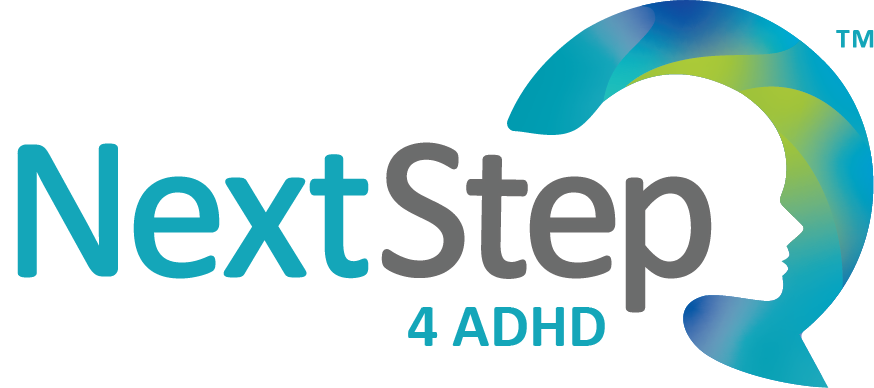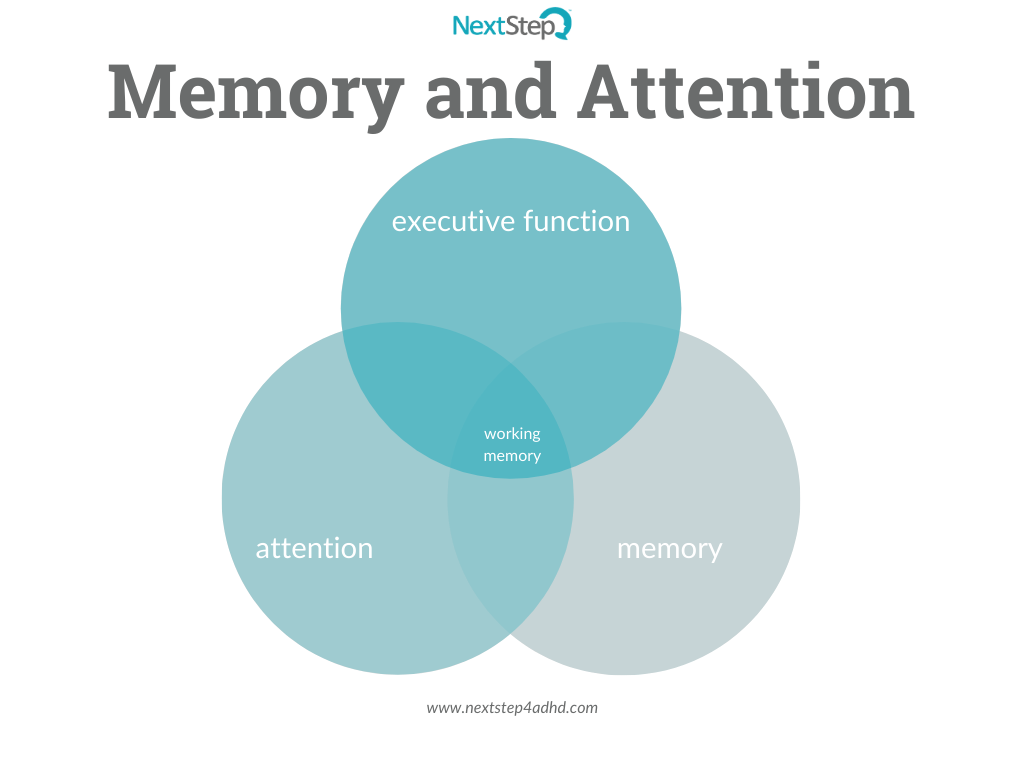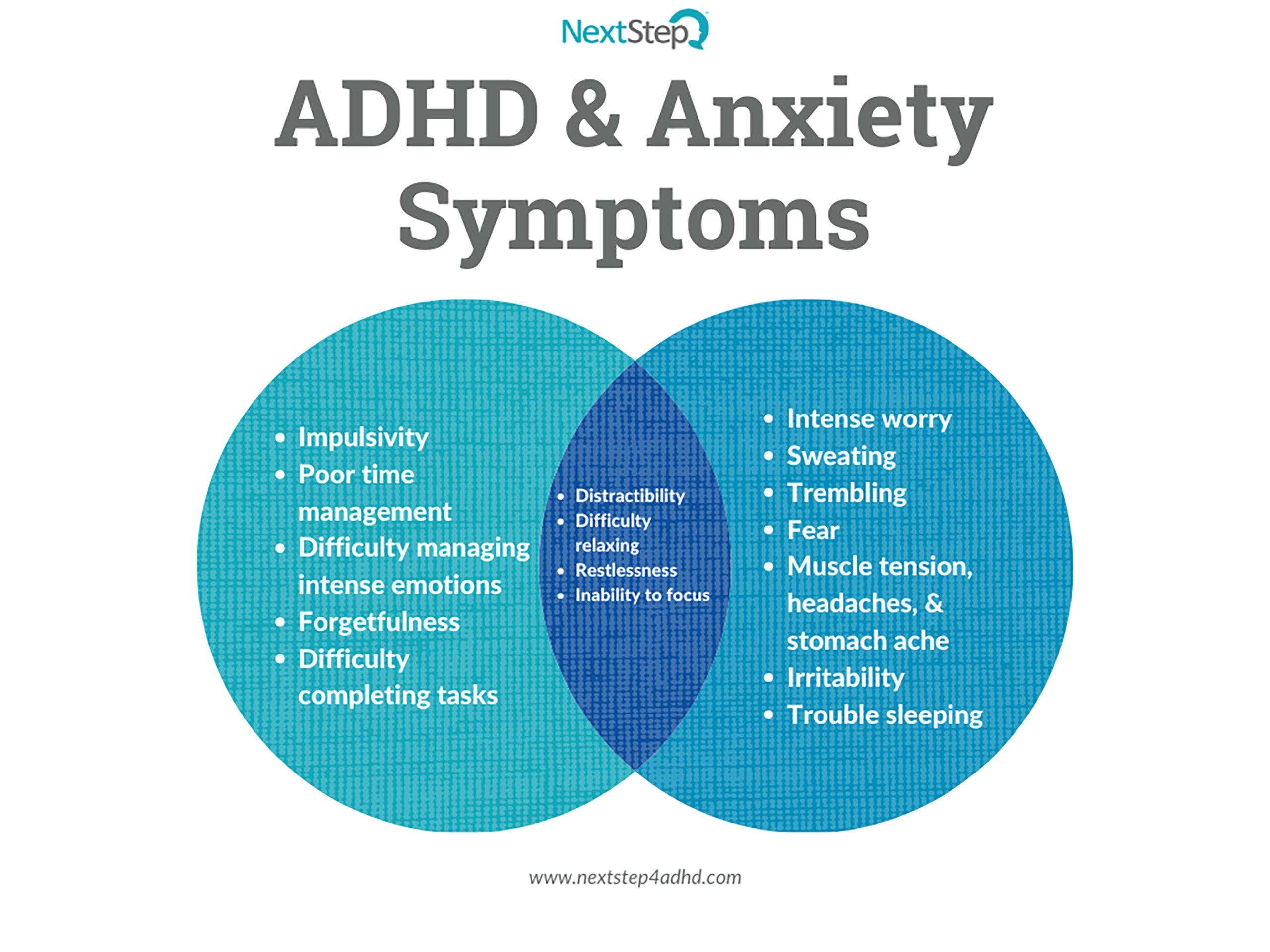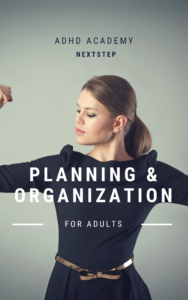
Attention Versus Memory: What’s the Difference?
Inattention Is a Common ADHD Symptom…
- Difficulty paying attention
- Forgetfulness
- Difficulty listening to others
- Problems paying attention with fine details
- Easily distracted
- Poor organizational skills
- Poor time management
Attention Versus Memory
ADHD and Memory Q & A
Below you can read our interview with Dr. Briscoe.
Q: How many people with ADHD struggle with memory?
ADHD typically does not affect long-term memory — one’s ability to recall memories from childhood, adolescence, and previous years.
- Attention
- Working Memory
Q: How does ADHD affect memory?
Q: How does memory work?
- If your boss sits you down to explain a 4-step process to complete a work assignment, the part of your brain responsible for “working memory” holds those four steps in your mind as he explains the details of the assignment.
- As you think through all the details of the assignment, the resources required to complete the processes involved, your working memory should retain the basic 4 steps as the “big picture.”
- Moreover, your working memory should also be working in full force to help you process the details of each step involved.
- As you listen to your boss, you are actively relying on your short-term working memory to recall the “big picture”, understand how the details of each step fit under your bosses’ primary objectives for the project, and analyze all the information as you think through all the various processes involved in completing the project.
You didn’t “forget.” You were not “lazy.” Rather, your working memory is not the same as it is in the average population and it affected your performance.
Q: How can memory be improved?
Your Next Steps
About Dr. Briscoe
 Dr. Brian Briscoe is a board-certified psychiatrist and the medical director of adult programs at Next Step 4 ADHD. Dr. Briscoe was voted a “Top Doctor” by Louisville Magazine. You can make an appointment with Dr. Briscoe here.
Dr. Brian Briscoe is a board-certified psychiatrist and the medical director of adult programs at Next Step 4 ADHD. Dr. Briscoe was voted a “Top Doctor” by Louisville Magazine. You can make an appointment with Dr. Briscoe here.

Is It Burnout or Something Else? Helping Healthcare Workers and First Responders Understand Compassion Fatigue
Given the high-stress environment that includes packed workdays, time pressure, and emotional intensity, it is a common experience for first responders and healthcare workers to experience burnout. You might even use this phrase yourself, but what does it really mean to be burnt out? And more importantly, is there something else going on besides burnout?
In this post, we’ll cover:
- What burnout is
- Why first responders need to know the signs of compassion fatigue
- What to do if you’re burned out
Burnout or Compassion Fatigue?
Burnout is defined as a long-term stress reaction that is marked by physical exhaustion and a feeling of a lack of accomplishment [2].
Nearly anyone in a stressful situation can experience physical and mental symptoms of stress, physical exhaustion, and a lack of sense of accomplishment. However, because their work frequently puts them in a position to see unimaginable suffering, it is not unusual for healthcare providers and first responders to experience these symptoms in excess. This is called compassion fatigue. Some first responders and healthcare workers even absorb the emotional stress and trauma of those people that they are helping.
This is especially true in the current care environment created by the concurrent pandemic and community unrest.
Many healthcare workers and first responders have begun filling a dual role to their patients: care provider and emotional support person. Many care providers are filling in for families, who are unable to be a part of their loved ones’ final moments, to provide comfort and support. This type of emotional investment and compassionate care places them at increased risk of compassion fatigue.
However, given the current need for long hours, increased number of shifts, and increased workload during shifts, many providers mistake symptoms of compassion fatigue for simple burnout. Denial is perhaps the most detrimental symptom of compassion fatigue, as it leads providers to not seek help due to believing that they are simply exhausted [1].
Signs and Symptoms of Compassion Fatigue
Denial is a detrimental symptom of compassion fatigue, but it’s not the only symptom. Some common symptoms of compassion fatigue include the following:
• Feeling burdened by the suffering of others or blaming others for their suffering
• Isolating yourself
• Loss of pleasure in life
• Irritability or sadness
• Difficulty concentrating
• Insomnia
• Physical and mental fatigue
• Physical ailments, such as headaches or stomachaches
• Feeling that you have no outlet for your emotions
• Increased nightmares
• Feelings of hopelessness or powerlessness
• Decreased job satisfaction
• Overeating or poor appetite
• Excessive use of drugs or alcohol
• Decreased or poor self-care
• Complaints from others about your work or attitude
• Denial
How to Check-In With Yourself: Are You At Risk?
If you are a healthcare worker or a first responder, it’s important to check in with yourself and watch for signs of compassion fatigue. You can recover from burnout and compassion fatigue, but it’s best to catch it early, if possible.
Some questions to ask yourself:
• Is my stress getting in the way of living my life (Is my daily functioning altered?)?
• Did a work experience feel out of the ordinary or feel like it overwhelmed my ability to remain calm and neutral?
• Do I find it hard to separate from work once the shift/workday is over? Do thoughts and memories of my day impinge upon my time off?
• Do I feel like I accomplish less during the day, even when I feel like I am working harder?
• Do I find myself becoming easily frustrated, irritated, or annoyed, especially in response to situations or triggers that previously did not elicit such a strong reaction?
• Do I experience compassion in the extremes (i.e. little or no compassion toward some people while becoming overly involved with others)?
• Do I find myself feeling bored or disengaged from my work?
• Do I find myself suffering from mild physical ailments, such as headaches or minor colds, more frequently than before?
WHAT YOUR ANSWERS MEAN: If you answered yes to any of the above questions, you may be suffering from compassion fatigue rather than burnout.
As a caregiver, it is vital that you find balance between care for others and care for yourself. Placing more focus on others places you at increased risk of compassion fatigue; however, caregivers frequently struggle to know how to care for themselves.
8 Ways to Restore the Balance in Your Life
Below are some tips for how to find and keep balance in your life.
1. Practice self-care.
Good self-care involves taking care of your physical, emotional, and spiritual health. Make sure to eat well, drink plenty of water, exercise regularly, and get plenty of sleep. Do not allow yourself to become isolated. Make time to engage in social interactions with people with whom you do not work. Ask yourself daily who is one person that you could reach out to and call them. If applicable, continue to attend religious worship services. Gatherings of your religious community are helpful in finding a continued sense of purpose and support.
2. Make sure to nurture yourself.
Find time daily to engage in activities that are a source of pleasure and distraction from the stresses of your day. Make this self-nurturing time a priority. It may be helpful to make a top 10 list of activities that bring you joy.
3. Allow yourself to take multiple mini-breaks during your workday.
Take a walk, leave the premises on your meal break, or just sit in your car for 15 minutes. It is important to take short escapes from the stresses of your workday.
4. Attempt to divert focus away from the negatives of the work and focus on the positive impact of your work.
Find what brings purpose and meaning to your job and find the things that you are grateful for.
5. Focus on what you can control and try to let go of things that you cannot control.
Write it down on paper if that helps you to visualize it.
6. Find someone to talk to and with whom you feel that you can share your pain and suffering.
However, avoid commiserating with coworkers. In this situation, misery does not love company.
7. Avoid self-medication with drugs and alcohol.
If symptoms are impairing your functioning (i.e. poor sleep), seek out professional medical treatment to address these concerns.
8. Seek out professional help.
Many people who are suffering from compassion fatigue need the help of professional coaches, counselors, or therapists to get back on track. Many employers have employee assistance programs just for this purpose. Find out what services your employer and/or insurance provider offers.
We’re Here to Serve You
About the Author
 This post was written by Monica Clark, LPA.
This post was written by Monica Clark, LPA.You can request an appointment with Monica here.
References:
- Bourg-Carter, Sherrie. 2014. High Octane Women. Psychology Today. Retrieved from
https://www.psychologytoday.com/us/blog/high-octane-women/201407/are-you-suffering-compassion-fatigue - Physician Burnout. Content last reviewed July 2017. Agency for Healthcare Research and Quality,
Rockville, MD. Retrieved from https://www.ahrq.gov/prevention/clinician/ahrq-works/burnout/index.html

What Are Executive Function Skills?
Do you ever feel like you’ve got a lot of information coming in and out of your brain? That maybe you just need a CEO or perhaps an air traffic controller in your mind to make sense of all the data coming in and out? Well, you do! Your brain uses a special skill set to help you plan, remember phone numbers or instructions, focus your attention, and juggle multiple tasks at once. This special skill set also helps you set goals, control impulses, prioritize tasks, and filter out distractions. What are these skills? They are called executive function skills.
In this post, we’ll cover:
- What executive function skills are
- How they impact child development
- How they affect adults with ADHD
- Strategies to strengthen your executive functions
What Are Executive Function Skills?
Executive function skills are a set of skills that help you with daily life. These mental skills include:
- Working memory
- Emotional self-regulation
- Flexible thinking
- Self-monitoring
- Planning and prioritization
- Organizing
- Task initiation
- Impulse control
Working memory (non-verbal and verbal)
Working memory helps you keep information in your mind. This can be as simple as a phone number, an address, or to recall a story that a friend told you. Non-verbal working memory allows you to remember something that can’t be spoken or written e.g., the scent of baking chocolate chip cookies or the melody of your favorite song.
Emotional self-regulation
Flexible thinking
Sometimes our day doesn’t go just how we think it will. If you’re able to “go with the flow” and adapt to schedule changes, you can thank flexible thinking. Flexible thinking is a skill that allows you to adjust to the unexpected. Children who struggle with flexible thinking may have a temper tantrum when the schedule deviates from what was expected.
Self-monitoring
Self-monitoring is a skill in which you monitor your own progress. This can look like many things:
- A child who suspects he is doing well in school (and is)
- An adult who gauges progress on projects at work and has an accurate impression of how well he or she is doing
If you have weak self-monitoring, you might be surprised by a bad grade.
Planning and prioritizing
Planning and prioritizing refers to the skill set for planning goals, creating the steps to reach that goal, and then accomplishing that goal. Planning and prioritizing is important for all aspects of life including running a household, reaching goals at work, and setting personal goals — including fitness goals.
Organizing
When most people think about organizing, they think about organizing a desk or closet. Planning and organization are two skills that help you keep track of your physical items, but it’s much more than that. Part of staying organized is about organizing your thoughts too!
Task initiation
In the running world, there’s a quote: “the hardest step is just getting out of the door.” This means that a runner may have no problems going for a 5-mile jog, but just getting dressed and out the door can be the most difficult part. This is task initiation at work– the ability to start projects or tasks. This can include:
- Projects at work
- Homework after school
- Household chores or tasks
Impulse control
Sometimes called inhibition, impulse control is best defined as “thinking before acting.” Individuals with weak inhibition may be more prone to blurting out answers, quickly speaking before reflecting, and engaging in risky behaviors.
Executive Function Skills Are Built
No one is born with executive function skills. They are learned! Children can start developing these skills at a very early age. For example, playing memory match games with your child is a fun way to help strengthen his or her working memory. According to the experts at Harvard Health, there are three phases in life in which executive function skills develop most rapidly. These are:
- Young childhood (about 3-5 years old)
- Adolescent years
- Early adulthood
Signs of Trouble with Executive Function Skills
Trouble with executive function can create obstacles for child and adults. Remember, this is a skill set. We aren’t born with these skills, but we grow and develop them over time. However, if individuals with ADHD can struggle with executive function deficits. This can make it hard for you (or your child) to focus, follow directions, manage time, manage intense emotions and more.
You might suspect that you are struggling with executive function if:
- You have trouble managing your time at home or at work
- You frequently misplace your items
- You have trouble organizing your thoughts
- You struggle to manage intense emotions
- You have difficulty transitioning between tasks
- You dislike when routines deviate from the norm
- You quickly forget information that you just read
- You struggle to finish tasks or projects
Children, too, can struggle with these. You might notice that your child has a hard time switching from play time or reading time. You might also notice that she or he shows time blindness.
Your Next Steps

Strategies for Calming the Coronavirus Chaos in Your Home – Interview with NextStep Providers
Even though more and more states are starting to re-open, it’s okay if you’re still feeling mixed emotions. Remember, it’s normal to feel a variety of feelings during a crisis. All of the events from the past few months have changed what is normal. Today, we are looking at various strategies for calming the chaos in your home.
In this post, we’ll cover:
- Strategies for reducing stress
- Tips for talking about the current pandemic with your children
- Mental health options during lockdown
We’ve interviewed several of the providers here at NextStep to help you gain insights into calming the coronavirus chaos in your home.
How can I help reduce stress levels in my children?
Stress can take a toll on your mental and physical health, but stress is tricky. It doesn’t always manifest in the same way. Some kids may become snippy when they’re stressed while others might withdraw. Regardless of how stress impacts your child, it’s important to help your children reduce those stress levels.
Keri Knight, LCSW
Kids pick up on their parent’s stress. So if a parent is stressed out and worried, the child is more likely to feel stressed and worried. Sometimes the best way to manage a child’s stress is if the parent manages their own.
You can do this in many ways, including:
- Ask the child what he/she is feeling and create opportunities for him or her to express emotions. Don’t offer advice but just listen.
- Try your best to establish routines. Routines help us feel grounded and centered and safe. You can try to keep routines as close to his/her routines before COVID-19 or you can create a new family routine to help everyone in the family regain a new sense of normal.
- Back to basics. Make sure that your child is getting enough sleep and physical activity and is eating healthy foods.
- Spend one on one time with your child. Let him/her pick the activity. Don’t use this time for teaching or correcting and try to overlook minor misbehavior. This is a time for connecting with your child and strengthening your relationship.
- Limit their exposure to the news and media.”
How can I talk about Coronavirus without adding to my child’s stress?
Keri Knight, LCSW
Know the facts. Get the facts from trusted resources. Let your kids know that you’re there to answer any questions they may have. Maybe say, “What questions do you have?” and don’t offer more detail that your child is interested in. Stick to the facts and speak in a calm and reassuring voice.
Talk to your kids about things they can do to feel more in control like washing their hands. Let them know that everyone deals with hard times and that stress is normal. Stressful times don’t last forever and when you come out on the other side, you’re stronger and more resilient than before.”
I feel worried all the time about COVID-19. What should I do?
Keri Knight, LCSW
You have many options:
- Get support and talk about your worries to a trusted friend or a therapist.
- Take care of yourself. Make sure you’re getting enough sleep, getting some exercise, eating nutritious foods as much as possible, and getting outside in nature.
- Do a brain dump. Write down all of your worries and thoughts on a piece of paper. Getting them out of your head can help you feel some relief.
- Focus on what you can control and let go of the things out of your control.
- Write your worries down on a piece of paper. Then for each worry ask yourself “What evidence do I have that this is actually going to happen?” This can help you to separate facts from the stories your brain is creating about what might happen.
Another tip: Give your brain something else to do. Our brains like to have a job. They also like to keep us safe and are always on the lookout for anything that might cause us harm. So instead of letting your brain make a list of everything that could go wrong, have it scan for all the things that are going okay.
How can I help my family deal with the disturbing information regarding the pandemic?
Dr. Brian Briscoe
You have many options:
- Limit exposure to news about the coronavirus to no more than 30 min per day at the most.
- When engaging in conversation with others, steer the conversation towards topics other than the pandemic. Yes, its perfectly normal and healthy to discuss the pandemic, but also try to bring up other interests that you have shared in the past and let those topics be the focus of the conversation as well.
- Keep busy. Engage in a hobby that you have previously enjoyed, or pick up a new hobby that you have considered starting in the past but never had time to engage in before.
What are my options for getting mental health care during the pandemic?

Dr. Brian Briscoe
If you get to the point that your anxiety/worry is overwhelming you to the extent that you are having a fair amount of difficulty functioning in life, it may be time to consider reaching out for professional help. Not everyone needs professional help, but some people do. It is not a sign of weakness to get help. Most of the people I know who receive mental health care these days are very high functioning people – every day moms and dads, teachers, attorneys, physicians, business executives, etc. Good people with everyday problems.
Your Next Steps
Learn More

Is It ADHD? It Could Be Anxiety
Can’t concentrate? Struggling with focus? It’s tempting to think you’re dealing with ADHD, but could anxiety be the culprit? Anxiety and ADHD are very different mental health conditions, but sometimes they share similar symptoms (like not being able to concentrate). To make it more confusing, sometimes both conditions occur at once. According to the National Resource Center on ADHD, about 53% of adults and 30% of children with ADHD also have anxiety.
To help shed light on the issue, we’ve talked to Dr. Brian Briscoe. In this post, we’ll answer all of your questions, including:
- What are the “look-alike” symptoms between anxiety and ADHD?
- What are the symptoms of anxiety? What are the symptoms of ADHD?
- How do I know if I’m dealing with ADHD and anxiety?
- How are co-occurring disorders are treated?
What Are the Common Symptoms of ADHD and Anxiety?
Before we dive into the shared symptoms of ADHD and anxiety, let’s look at each condition separately.
Symptoms of ADHD
There are three main categories of ADHD symptoms: inattentiveness, impulsivity, hyperactivity. As a result, some of the common signs and symptoms of ADHD include:
- Impulsiveness
- Poor time management skills
- Disorganization and problems prioritizing tasks or projects
- Problems focusing on a task
- Trouble multitasking
- Excessive activity or restlessness
- Poor planning
- Low frustration tolerance
- Difficulty concentrating
Symptoms of anxiety
There are many types of anxiety disorders, including OCD and generalized anxiety disorder. Symptoms vary depending on which type of anxiety disorder is present. Common symptoms of generalized anxiety disorder include:
- Feeling intensely nervous
- Feeling restless
- Increased heart rate
- Breathing rapidly
- Sweating
- Trembling
- Feeling weak or fatigued
- Trouble concentrating
- Difficulty thinking about things other than the present worry
Anxiety can also cause physical symptoms such as headaches, muscle tension, and an upset stomach.
The Link Between ADHD and Anxiety
Anxiety can lead to distractibility
ADHD can lead to anxiety
Shared symptoms of anxiety and ADHD
We’ve just covered the symptoms of ADHD, the symptoms of anxiety, and how the two can be linked. The most common look-alike symptoms include:
- Distractibility
- Inability to focus
- Difficulty relaxing
- Feelings of restlessness
What to Do If You’re Dealing with Anxiety and ADHD
Treating ADHD and Anxiety at the Same Time
If you have been diagnosed with ADHD and anxiety — or you suspect you have both — it’s normal to have a lot of questions:
- Can you treat two conditions at once?
- Will treating ADHD make the anxiety go away?
- Are they connected or do they have separate causes?
In some cases a professional may determine that untreated ADHD is the underlying root cause of anxiety, and treatment for the ADHD can lead to improvement.”
Your Next Steps
References:
https://chadd.org/wp-content/uploads/2018/04/coexisting.pdf
Learn More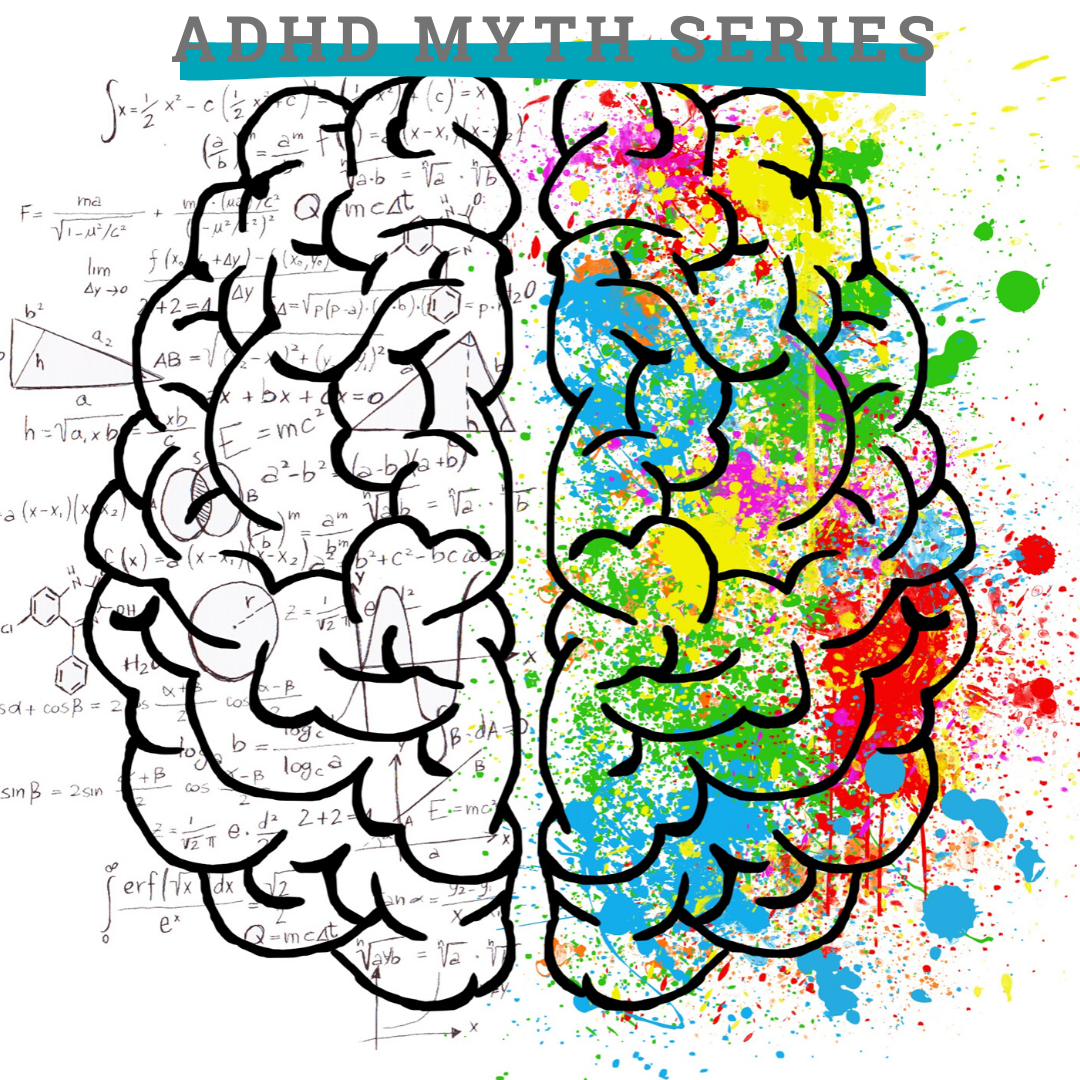
ADHD Medication Myths and Facts
In our third installment of the ADHD myth series, we’re focusing on ADHD medication. In this post, we’ll explore two popular questions:
- How do stimulants affect ADHD?
- Is Ritalin dangerous?
Myth or Fact: Ritalin Is a Stimulant So It Won’t Even Help Hyperactivity.
Ritalin is a common medication prescribed to individuals with ADHD. It is true that Ritalin is a central nervous system stimulant, but it can help with hyperactivity. Many parents wonder how a stimulant can help their hyperactive child. It’s a valid question, and that’s how this myth spread quickly.
But to understand how Ritalin — a central nervous system stimulant — helps reduce the symptoms of ADHD, we’ve talked to Dr. Brian Briscoe. He weighs in on the topic:
“Some of the medications used to treat ADHD are called “stimulants.” These stimulants (which include Ritalin, Vyvanse, Adderall, Concera, etc.) are so named because they stimulate — or increase — activity in certain parts of the brain that tend to be underactive in persons with ADHD. One area of the brain that these medications work is the pre-frontal cortex.”
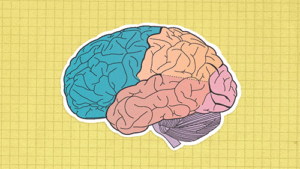
The Link Between the Pre-Frontal Cortex, ADHD, and Medication
The pre-frontal cortex is located in the front of the brain. This is a part of the brain that regulates attention, mood, and motor activity. Persons with ADHD tend to have less activity in the pre-frontal cortex when compared to persons without ADHD. According to Dr. Briscoe, “The stimulant medications act to stimulate the pre-frontal cortex in persons with ADHD, and thereby improves the ability to regulate attention, mood, and motor activity.”
By acting to stimulate the function of the pre-frontal cortex, stimulant medication actually improves regulation of attention and motor activity, thereby reducing hyperactivity.”
This video sums up how ADHD medication can reduce symptoms by stimulating the pre-frontal cortex.
The bottom line: Ritalin is a stimulant, but it can help with hyperactivity.
What Are Other ADHD Myths?
Unfortunately, this isn’t the only myth about ADHD, but we’re committed to sharing the truth about ADHD. You can read more about the most common myths in these posts:
Your Next Steps
Medications can help significantly in all the areas we discussed, but it’s essential to remember that skills-building (i.e., learning strategies and tactics to cope with ADHD) is equally important. At Next Step 4 ADHD, we are all about comprehensive holistic care so that you or your child can live your best life.
Trying to deal with ADHD on your own can be difficult, but with our innovative approach, you’re never alone. We are here to guide you with your next steps. If you’d like to learn more about us or set up a confidential discussion with one of our professionals, you can complete this form for a virtual appointment. Alternatively, call our Louisville, Kentucky office at (502) 907-5908.
Learn More
ADHD Myth Series: Is It Okay to Stop Taking ADHD Medications on School Breaks?
With summer drawing closer and closer, many parents of children with ADHD start to wonder if they should pause their child’s ADHD medication during the school break, but is this a good practice for children with ADHD? We’ve interviewed Dr. Brian Briscoe to help us de-bunk this myth.
What’s a Medication Holiday?
A medication holiday is a “deliberate interruption of pharmacotherapy for a defined period and for a specific clinical purpose,” according to a study published in the Journal of Psychosocial Nursing and Mental Health Services. Sometimes medication holidays are used to assess the efficiency of a certain type of medicine.
However, there are many myths surrounding ADHD, including that it’s okay to take a medication holiday from ADHD medication on weekends, school breaks, and summer vacations. This can be problematic for a few reasons.
Consequences of a Medication Holiday
Stopping any type of prescribed medication suddenly can cause problems. Research shows that medication holidays can increase the risk of “destabilizing patients, difficulty in distinguishing [between] rebound and discontinuation effects, and increasing the risk of poor medication adherence.”
In addition, children may need their medication for more than just improving school performance.
ADHD Affects All Aspects of Life
ADHD affects all aspects of life — not just school or work performance. This means that your child’s ADHD medication affects more than just his or her performance in school.
ADHD can affect your child’s:
- Home life
- Relationships
- Ability to manage emotions and impulsivity
In other words, to stop ADHD medication over a school break can impact your child’s ability to successfully navigate through his or her life. For example, he or she may start to struggle with projects and daily tasks at home.
Dr. Briscoe highlights how quickly stopping the medication can compound problems: “When things pile up at home — incomplete projects, dishes, laundry, etc. — it can create problems on the home front, as well as anxiety for the person who suffers from ADHD.” This is true for both adults and children. Children might feel overwhelmed by incomplete chores, etc.
This means that a sudden break from medication can extend far beyond school or work performance.
The Effect of Medication Holidays on Relationships
Remember that ADHD affects relationships, and that’s true for children, too. ADHD can affect the ability of children to engage in — and stay focused on — conversations. Some children with ADHD can struggle to manage intense emotions, and some may struggle with tendencies to act before thinking, to act on impulse. (Keep in mind that impulsivity is one of the categories of symptoms of ADHD.)
Medication can help reduce the severity of symptoms in your child, and when symptoms are managed, it’s easier for your child to engage in relationships.
ADHD Medication & Behavior
ADHD medication can help your child manage his or her behavior whether school is in session or not.
According to Dr. Briscoe:
Children with ADHD experience difficulty regulating their behavior just as much at home as they do at school. As children’s behavior (i.e., hyperactivity, impulsivity, difficulty regulating attention, follow through, etc.) wears on parents and other caregivers, caregivers can begin to show signs of impatience, and sometimes speak in ways that may be a bit discouraging to a child.”
As parents become frustrated, the child can then “internalize these messages (‘I can’t get anything right’, ‘I’m lazy,’ ‘I’m stupid,’ ‘I’m a bad kid’), which can have negative impacts on their self-esteem and overall mental health on a long-term basis.”
The Takeaway
ADHD medication can help a child in all aspects of his life, including:
- Home life
- Relationships with family members and peers
- Regulating behavior
- Managing emotions
To take a break from medication solely because a child is out of school can cause repercussions in other areas of your child’s life. If you do have concerns about your child’s medications, including side effects or dosage questions, it’s important to speak to your child’s provider. Never stop a prescribed medication or adjust dosage unless directed to do so by a mental health professional. That’s because suddenly stopping certain medications can cause withdrawal symptoms, even if you take your medication as directed.
Other ADHD Myths
Unfortunately, this isn’t the only myth about ADHD, but we’re committed to sharing the truth about ADHD. You can read more about the myth about outgrowing ADHD here.
Your Next Steps
Medications can help significantly in all the areas we discussed, but it’s essential to remember that skills-building (i.e., learning strategies and tactics to cope with ADHD) and effective parenting techniques are equally important. At Next Step 4 ADHD, we are all about comprehensive holistic care so that your child can not only survive, but thrive with ADHD.
Trying to deal with your child’s ADHD on your own can be difficult, but with our innovative approach, you’re never alone. We are here to guide you with your next steps. If you’d like to learn more about us or set up a confidential discussion with one of our professionals, you can complete this form for a virtual appointment. Alternatively, call our Louisville, Kentucky office at (502) 907-5908.
Learn More

3 Strategies for Organizing Your Thoughts (and Increasing Your Productivity)
Are You Part of the 54%?
A survey conducted by the National Association for Professional Organizers found that a whopping 54% of Americans struggle with disorganization and clutter. If you have ADHD, it can be even more challenging to overcome the clutter.
But disorganization isn’t limited to just physical clutter. Disorganization can apply to your thoughts too. If you feel like your brain is flooded with too many thoughts, you’re not alone.
In this post, we’ll cover:
- How our brains are like computers
- 3 simple tips for organizing your thoughts
- How to reboot your brain to increase productivity
- How we can help you take your planning skills to the next level
Your Brain Is a High-Tech Computer
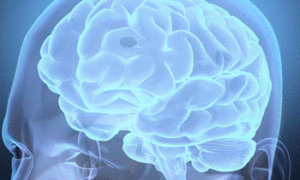
Your brain is so amazing. Just think of all of the bodily functions and processes your brain is controlling – without you even telling it to! For example, your brain stem controls involuntary muscle movements such as the beating of your heart.
But – like a computer – sometimes the brain can get bogged down with too many thoughts, or files. When the brain is overloaded, it can slow down and lose focus. When this happens, you might say “your brain feels fried” or that “you’re just frozen.” An overloaded brain can often lead to missed deadlines, forgotten details, and difficulty concentrating.
And what happens when your computer gets frozen? You re-boot!
Re-Boot Your Brain
There are many strategies for organizing your thoughts and re-booting your brain, but today, we’ll focus on three ways you can empty your thoughts, re-organize your brain, and improve your focus.
A restructured mind is much more efficient than a constantly overloaded one.
3 Simple Ways to Organize Your Thoughts
Choose the Right Time
Organizing your thoughts isn’t really something you can do while working out, washing dishes, or trying to work. It’s important to set aside time specifically dedicated to organizing your thoughts.
Find the time that works best for you. For example, you may find that first thing in the morning works great. On the other hand, you might want to sip a cup of coffee or a take quick walk around the block to allow your brain time to wake up.
You only need a few minutes, but make sure you’re fully present during this time.
Select Your Method of Logging Your Thoughts
This step focuses on getting your thoughts out of your mind and onto paper (or into a note-taking app.) This allows you to “park” your ideas until you have time to thoroughly address them.
Ideas for logging your thoughts include:
- A notebook
- A planner
- Note apps on your phone or tablet
- Productivity apps or programs (such as OneNote)
- Voice recording feature on your phone
Whatever tool you choose, make sure it’s tangible. Keeping this list in your head can clog up your brain power.
Get Your Ideas Out
If you have too many thoughts swirling in your head, it’s hard to focus on any one of them. During this step, write out everything on your mind, including:
- To-do list items
- Thoughts
- Questions
- Ideas for future projects, etc.
At first, you don’t have sort these items. The first step is to get the ideas out of your head. Once all of your thoughts are on paper, it will be easier to sort them into actionable items.
Now that your thoughts are written out, ask yourself which items are necessary for today.
If the answer is yes, then follow these steps:
- Add that item to your to-do list for the day
- Cross it off as you complete it!
If the answer is no, then follow these steps:
- If your thought is an “idea for a project”, then add it to a file specifically dedicated to your ideas that you can return to when you have more time.
- If your thought is a more of a “question”, then schedule time later to research the problem, or send out an appropriate email, or make a phone call about the problem, etc.
- If your thought is a task that needs to be dealt with soon (but just not today), then schedule it in your planner or calendar for the appropriate day.
You can repeat these steps daily or even twice a day, if needed.
A Small Habit That Works
When you’re able to organize your thoughts, you’re no longer constantly badgered by swirling thoughts in your head. Getting your thoughts out allows you to organize them. In the end, this one small habit helps you quiet your mind, decrease your stress levels, and spend more time doing the things you love. You’ll be better able to focus, concentrate, and prioritize your attention
We Can Help You Get Organized
Planning and organizing are two very important executive function skills. These are skills that many people with ADHD struggle with, but these are skills that can be taught. At Next Step 4 ADHD, you can learn the skills you need to get organized with our 5-week, online course: Planning and Organizing for Adults.
Planning and Organization for Adults is a 5-week interactive course that includes skill-building lessons and activities, live webinars, and personalized coaching support. If you are struggling with tasks such as paying your bills, showing up to appointments, or remembering to do certain items; this program offers you an opportunity to learn and apply tactics taught to you by Keri Knight, LCSW so that you can live a happier, stress-free life.
Want to Learn More?
Dealing with ADHD on your own can be difficult, but with our innovative approach, you’re never alone. We are here to guide you with your next steps. If you’d like to learn more about us or set up a confidential discussion with one of our professionals, you can complete this form for a virtual appointment. Alternatively, call our Louisville, Kentucky office at (502) 907-5908.
Learn More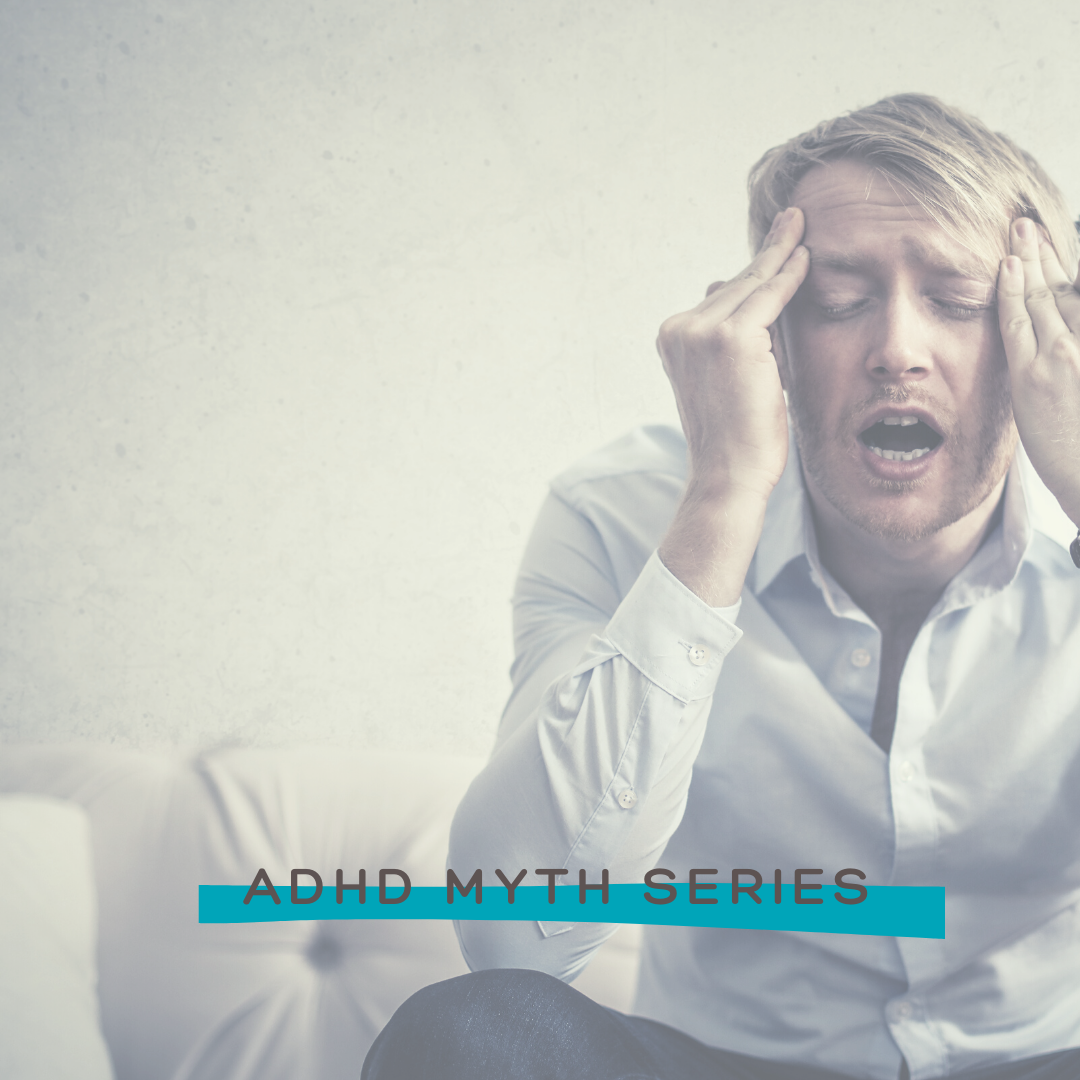
Myth: ADHD Only Affects Kids
Did you know that ADHD wasn’t always called ADHD? In fact, it used to be called hyperkinetic disorder of childhood. This name insinuated that ADHD affected children only. However, this isn’t the case.
In 1987, the American Psychological Association (APA) revised the DSM-III to reflect a new name: attention deficit hyperactivity disorder. Despite the name change, we continue to see a common misunderstanding that once a person reaches adulthood, he or she can outgrow ADHD. This is a myth.
In this post, we’ll cover:
- The root of the myth
- How ADHD impacts adults
- How we can help
ADHD Doesn’t Just Affect Children
According to CHADD’s National Resource Center on ADHD, 10 million American adults have ADHD. That’s roughly 4.4% of the adult population in America, according to the National Institute of Mental Health.
Because the earliest definitions of ADHD (in the first half of the 20th century) focused only on children, many people who were treated for childhood ADHD ceased treatment when they reached adulthood. But their symptoms didn’t go away. These individuals continued to struggle distractibility, regulation of attention, organization, time management, maintaining focus in conversation, impulsivity, and other issues related to ADHD.

In the late 1990s and early 2000s, researchers began to study adult ADHD more intensively. Thanks to advanced brain imaging studies and further research, researchers concluded that the majority of cases of childhood ADHD continue into adulthood. This is because ADHD is a brain-based condition with documented, structural differences in the brain. These structural differences don’t go away as a person matures. You can’t outgrow ADHD.
So how did we end up with this myth?
Adults may have had more time to learn strategies for managing symptoms. It’s also possible that the severity of the symptoms change over time. For example, a child may struggle sitting in a desk all day long, but if he grows up and enters a career that doesn’t require sitting at a desk, he may not struggle with that specific symptom as much.
How ADHD Impacts Adults
Adults with ADHD may also have difficulties with executive function. Recently, deficits in executive function — which includes task initiation and sustained attention — have been shown to be key factors that affect both academic and career success.
Executive functioning skills refer to a set of skills that help you manage thoughts and actions.”
Adult ADHD symptoms may include:
- Impulsiveness
- Disorganization of thoughts
- Poor time management skills
- Problems focusing on a task
- Trouble multitasking
- Excessive activity or restlessness
- Problems prioritizing and/or planning
- Low frustration tolerance
- Frequent mood swings
- Problems following through with and completing tasks
- Hot temper
- Trouble coping with stress
- Attentional control
Untreated, ADHD in adults can lead to difficulties at work and home. It can cause serious problems in an adult’s academic work, professional career, and even personal relationships.
The good news is that additional research has proven that treatment for adults can be very helpful.”
It’s never too late to get help. Even better, the right kind of help can make all the difference when it comes to reaching a person’s full potential.
Treating ADHD in Adults
Whether you are new to ADHD or have been living with ADHD for a long time, you can be quickly overwhelmed with misinformation and rumors surrounding ADHD. That’s why education is often a critical first step to gaining a better understanding of how your ADHD affects your life and relationships.
Keri Knight, LCSW states: “The right education can help you and your loved ones clear up any misconceptions, and it also reduces the unproductive blame and guilt that many people and families experience with ADHD. It can be a relief to know that the difficulties with memory, organization, and attention are symptoms, not character flaws. In fact, education is almost universally agreed upon as the necessary first step in treatment.“
In addition to educating yourself on ADHD, you may also benefit from:
- Coaching
- Therapy
- Medication
- Lifestyle changes, such as improved diet, exercise, and better sleep.
With the right treatment, you can thrive!
You’re Not Alone on This Journey
At Next Step 4 ADHD, we offer complete support and comprehensive treatment for adults, adolescents, and children who struggle with ADHD. We strongly believe that simply medicating the problem doesn’t fully address the issue. There are skills you can learn and develop.
More importantly, our team of professionals offers an ongoing support system when you need it.
Dealing with ADHD on your own can be difficult, but with our innovative approach, you’re never alone. We are here to guide you with your next steps. If you’d like to learn more about us or set up a confidential discussion with one of our professionals, you can complete this form for a virtual appointment. Alternatively, call our Louisville, Kentucky office at (502) 907-5908.
References:
- https://www.ncbi.nlm.nih.gov/pubmed/4463400
- https://www.nimh.nih.gov/health/statistics/attention-deficit-hyperactivity-disorder-adhd.shtml
- https://www.healthline.com/health/adhd/history#1980

5 Art-Based Activities to Keep Hyperactive Kids Busy
Are you feeling stuck in a rut creating fun activities to keep your kids busy? Try an art project! Art can be a great way to occupy your kids, and it provides so many benefits to your children. Creating art boosts confidence, stretches the imagination, and — for children with ADHD — it can increase attentional abilities.
In this post, we’ll cover:
- The benefits of art at home
- Tips for success
- 5 easy art activities to keep hyperactive kids busy
Benefits of Art at Home
There’s no denying that art is a great way for humans — no matter the age — to express emotions. Art is a particularly good outlet for expressing difficult emotions such as anger, frustration, sadness, and anxiety. While creating art, children can work through difficult emotions, reduce their stress levels, increase self-confidence, and even strengthen problem-solving skills.
Tips for a Successful Art Session
You’re busy working from home, you’re trying to homeschool your child… is art really the best option? While some art projects are labor intensive, require a lot of adult supervision, and are oh-so-messy, there are plenty of easy art projects that your kids will love.
To make the most out of your art session, keep these tips in mind:
- Focus on the process rather than the product: The goal isn’t to make the next museum-worthy masterpiece. It’s all about the journey. Your child might love the sensory process of using art. Even just scribbling with a crayon on paper can be therapeutic. Encourage your child to concentrate on what it feels like to color, draw, etc.
- Talk about it: Ask your child about his or her artwork. Avoid criticizing the piece. Try asking “What’s happening in this picture?”
- Explore feelings: If your child isn’t happy with his end result — or if he becomes frustrated — create an opportunity for problem solving. Ask “What would you do differently next time?”
- Use a timer: Timers can be a helpful way to helps kids learn to manage time. It prevents children from rushing through projects or losing track of time.
- Start simple: If you’re not used to trying at home, it’s best to start simple. Avoid projects with too many steps. You can even run a Google search for “crafts for [insert your child’s age].”
5 Art Projects to Keep Hyperactive Kids Busy
Ready to try some art? Remember, you can also just color. Coloring is relaxing and it’s calming for both adults and children.
1. Create a Mandala
A mandala — which means “circle” in Sanskirt — is a great introduction to art at home. At it’s most basic, a mandala is a circle with geometric shapes inside.
To make a beginner mandala, follow the step-by-step guide. Once your child has drawn his or her pattern, spend time coloring each geometric shape, using crayons, colored pencils, or markers.
Drawing and coloring a mandala providers many benefits for children with ADHD. This type of coloring can be very therapeutic, but it’s also a confidence booster to create the pattern.
According to a study published in the Journal of the American Art Therapy Association, drawing mandalas can reduce impulsivity and settle hyperactivity in children with ADHD.”
2. Scribbles
Don’t underestimate the power of a scribble! Give your child clean sheets of paper and drawing utensils (crayons, etc). Allow him or her to create scribbles, and when the paper is full, simply flip it over and decorate the second side. For younger children, ask them about the designs. Try asking, “Tell me about your picture. What did you create?”
3. Ripped Paper Collage
Older children may sense the tension or increased stress levels during the pandemic. If you sense that your child is anxious, have him or her draw his worries. This is a good opportunity to discuss any feelings he or she is having. When talking about the pandemic, it’s okay to answer your child’s questions, but use age-appropriate phrases to help reduce stress.
To create a ripped paper collage,
- Ask your child to rip up the paper (the one where he drew his worries)
- Tape or glue the pieces onto a second piece of paper
- Ask your child to create a second collage of something that makes him or her happy
Tip: If you or your child is having a hard time with anxiety or intense worries, we also offer telehealth sessions for children and adults.
4. Springtime Snowmen
For children who love sensory experiences, a springtime snowman might be the perfect afternoon activity.
- Choose your medium: PlayDough, kinetic sand, etc
- Lay wax paper over the play area to help keep it tidy
- Ask your child to make a snowman
- Make a hat, scarf, buttons with clay
Your child might just enjoy squishing the kinetic sand or making the balls, and that’s okay too!
5. Try Crochet
If you have an older child, crochet can be a great outlet for busy hands. According to a research from Dr. Pippa Burns with the University of Wollongong Australia , crochet has a tremendous impact on mental health. Crochet (and knitting) can promote:
- Calmness
- Happiness
- Improved memory
- Improved concentration
More Resources for Home Learning with an ADHD Child
As you continue to work at home and teach your children, we are here to support you. Remember, it’s normal for kids to feel scared or apprehensive about current events. We have created several resources and programs to help you create calm learning environments so your children can thrive at home.
- 9 Parenting Tips to Survive Isolation with Your Kids (and Maybe Enjoy It)
- 8 Tips to Help Your Child with ADHD Thrive with E-Learning
- Surviving Online Learning: A Guide for Parents + Free Printables
Questions? We’re Just a Call or Click Away
At NextStep 4 ADHD, we’re happy to provide comprehensive care for ADHD — for you and your children. If your child has ADHD, we don’t want him or her to miss out on valuable sessions. Whether you’re interested in receiving a diagnosis, therapy for your child, or other services, we are here to make sure your telehealth experience is successful. Give us a call or send us a message to request more information.
Don’t forget to sign up for our free newsletter so you can stay up-to-date with the latest news, free ADHD resources, and upcoming events!
Learn More